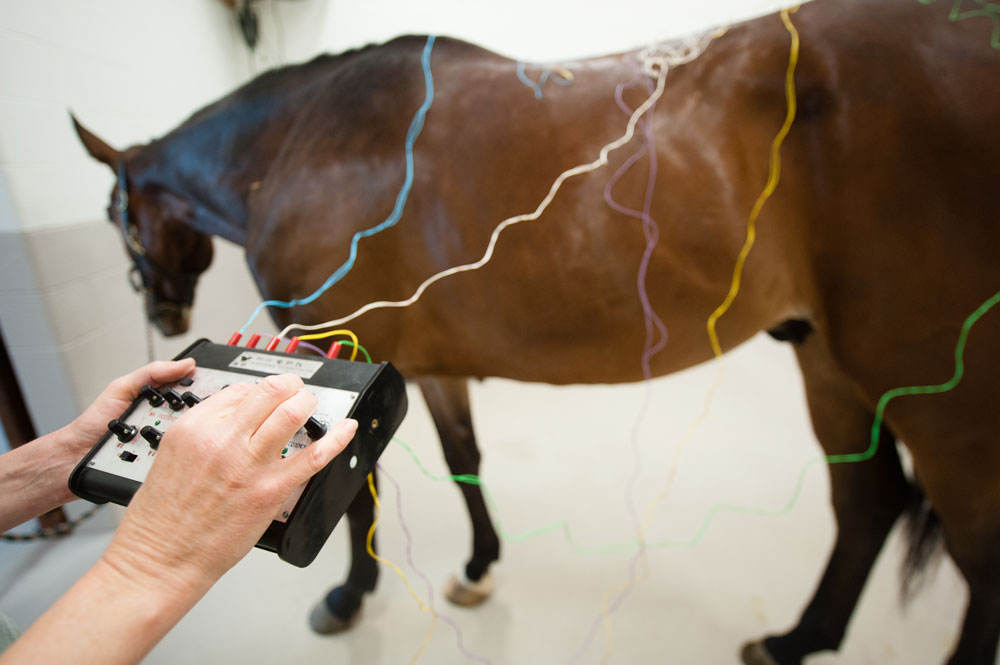
At the 2020 AAEP Convention, Erin Contino, DVM, MS, MCVSMR, Assistant Professor at Colorado State University’s College of Veterinary and Biomedical Sciences, mentioned one other technique that some feel could be helpful for relief of equine back pain—the use of whole-body vibration on a vertical vibrating platform.
A study looked at using this vibration for 30 minutes twice a day, five days a week, for two months. The results identified significant increases in multifidus symmetry and increased cross-sectional area. (The multifidus muscle is a thin strip of tissue that starts at the sacral bone at the base of the spine and extends up to the axis—commonly referred to as the second cervical vertebra or C2. The multifidus muscle forms attachments between the individual vertebrae. Each part of the multifidus muscle is short and controls only a few vertebrae plus the joints between the vertebrae.)
However, Contino feels that implementing core exercises and the elastic resistance band strategies (mentioned in the previous article) achieve better results.
It is important for back pain to be managed appropriately through a thorough veterinary exam and appropriate techniques and medication. A variety of anti-inflammatory medications are available—non-steroidal anti-inflammatory drugs (NSAIDs) and local corticosteroid injections.
A study with bisphosphonates resulted in significant improvement of spinal up-and-down flexibility in canter at 60-120 days, but these drugs cannot be used with NSAIDs, in horses with kidney problems, or in horses less than four year of age. Methocarbamol is a central-acting muscle relaxant that is helpful in occasional cases. Keep in mind there are medication restrictions imposed by USEF and FEI that you must follow if you are competing.
Shockwave therapy can yield favorable improvements in selected cases, as can electro-acupuncture.
There are cases that respond well to chiropractic maneuvers, and some do well with application of kinesiotape. Others require surgery to relieve pain. A study of 35 horses with back pain achieved success in 95% of cases following interspinous ligament desmotomy. This surgery was reported to provide 24 times greater likelihood of long-term resolution compared to interspinous corticosteroid injections.
Contino advised that it is important to attempt medical treatment at least once before resorting to surgical options.



